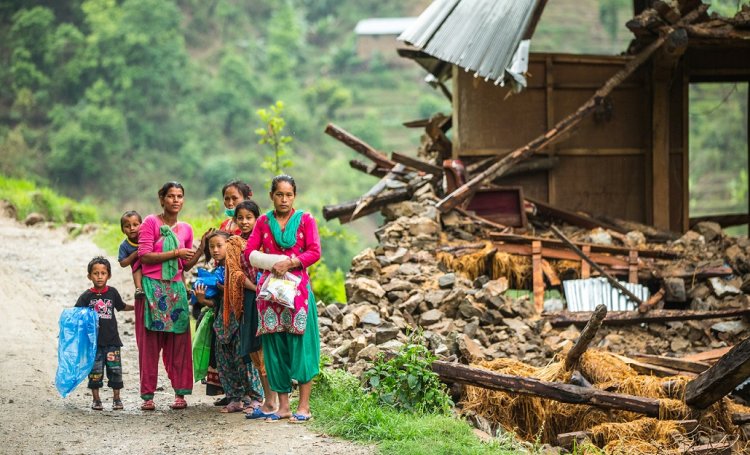Women, girls should be engaged in disaster risk management
May 8, 2019 | Expert Insights

Like the society, disasters can be discriminative against people. Less access to social safety measures, financial conditions and support from the community, can add up to the woes caused by natural disasters. And, they discriminate gender wise too, as a recent World Bank report explains.
Background
Natural calamities spare no one but women and children are at greater risks to survival, and recovery, especially in the aftermath of such disasters. According to the United Nations, over the past 20 years, natural hazards have affected 4.4 billion people, claimed 1.3 million lives, and caused $2 trillion in economic losses.
Also, men were taught how to swim and climb trees at a very early age. Unfortunately, the scenario is not the same in the case of women and girls.
Analysis
Natural disasters can completely halt the development of a country. They not only destroy lives and properties but also affect development efforts including gender equality.
Considering all these parameters especially, the increasing mortality rate of women and girls in the aftermath of disasters, governments from across the world, have started to lay emphasis on engaging both the sexes of the society for disaster management--both at the national and local levels.
Government agencies have started to realise that women and children should take the centre stage while formulating disaster risk prevention and community resilience programs.
Several success stories from Nepal, Cambodia, Bangladesh and the Philippines, show the impact of children and youths’ involvement in disaster risk preparedness.
Due to increasing awareness among government officials and people, perception towards natural disasters has changed.
Women are important agents of change. Recognising and mobilising their skills, potentialities and capacities, to protect their safety along with their dependents and of the communities, is an important task in any disaster management.
During the Bhuj earthquake in 2001, the grassroots women’s groups from Maharashtra travelled to Gujarat, to share their experiences and pledge long-term assistance.
Considering their skills to manage home and family, women are also good at multi-tasking—an essential element required for disaster management.
It’s worth mentioning here that during crisis, our mothers and sisters, contribute in organising food, shelter and protection. There are several examples where women have been informally involved in the disaster reduction but their efforts and contributions, usually go unacknowledged.
Hence, women should be integrated into disaster planning, research and management. Considering this new approach, however, planners should look into the vulnerabilities and requirements of women.
Assessment
We believe that when women participate in emergency relief and disaster risk management, acquire significant knowledge and expertise which can benefit families and communities, at large. If affected women can benefit from the experiences of other women who have managed to deal successfully with disaster-related issues, many lives will be saved, and destructions will be avoided.
India watch
With a population of 1.2 billion people, women in India contribute to the rural sustainable economy. Hence, it is pertinent for the country to include them in disaster risk management, for the betterment of the nation.
Image Courtesy: Asian Development Bank








Comments